Keiichiro Shibuya is a gifted musician who has continued to create fresh sounds by crossing different boundaries and evolving. This series, “Massive Life Flow,” explores his mindset and what he envisions for the future. In the sixth installment, we report on the Android and Music Science Laboratory opening at the Art Science Department, Osaka University of Arts, in April this year.
The department anointed Shibuya as a visiting professor following the laboratory launch. He plans on working on a myriad of projects related to androids and music alongside frequent collaborators Hiroshi Ishiguro, a researcher, and Shintaro Imai, an electronic musician. We explore the present state and potential of the world’s first music and android laboratory.
The birth of a laboratory shedding light on the future of art and technology
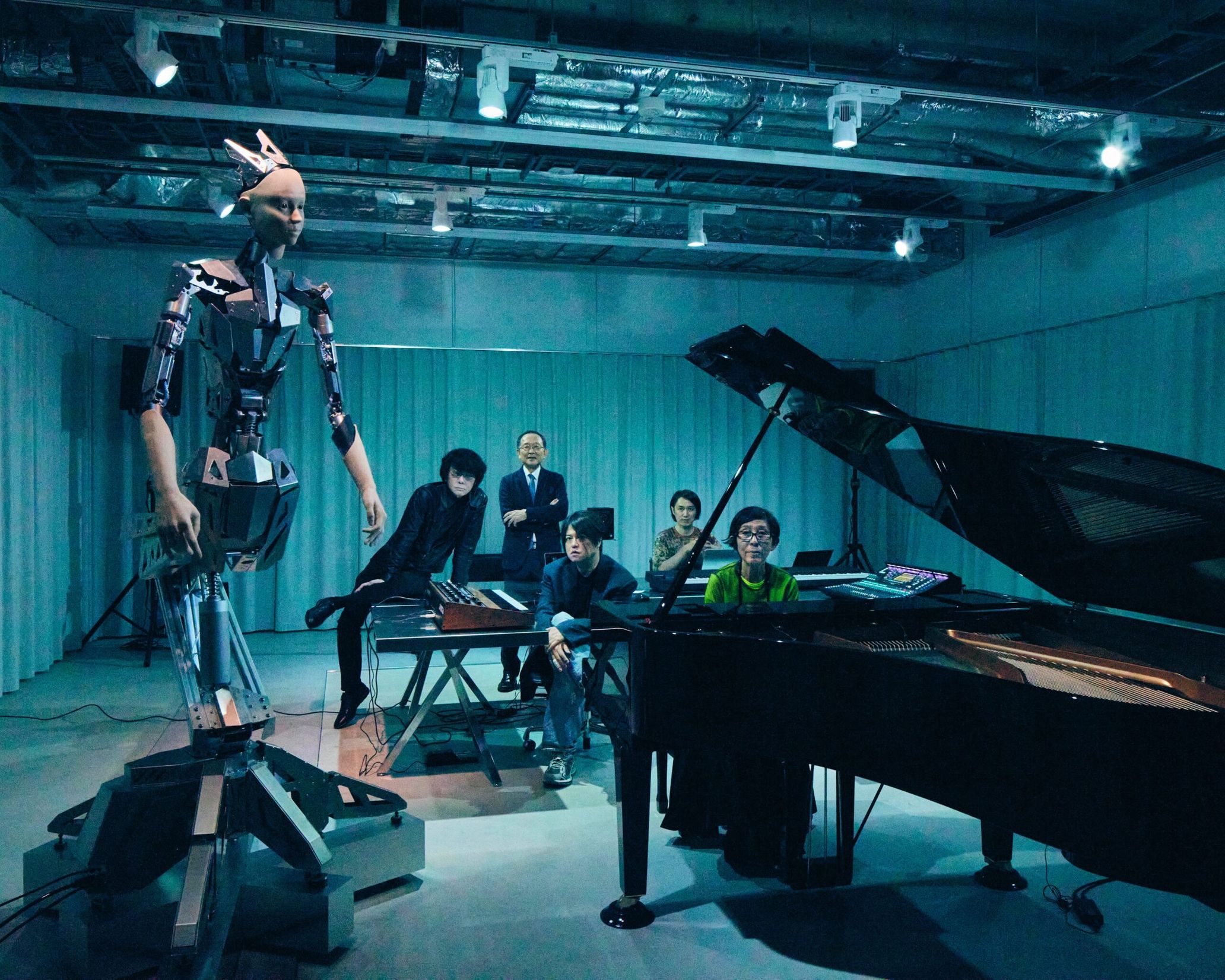
Expo ‘70 in Osaka was a happy marriage of art and technology, as symbolized by the Pepsi Pavilion made by the American avant-garde group E.A.T. (Experiments in Art and Technology), Space Theater at the Steel Pavilion directed by Toru Takemitsu and Kei Usami, and Mitsui Group Pavilion with contributors like Katsuhiro Yamaguchi and Toshi Ichiyanagi. It’s well-known that the vision and creations shown at the expo had a palpable influence on the creative scene.
More than half a century later, Osaka will welcome its second World Expo three years from now. It is also home to a groundbreaking laboratory that sheds light on a new future of creative expression and advanced technology.
The Android and Music Science Laboratory (AMSL), located in the Art Science Department of Osaka University of Arts, has been described as the world’s first music and android laboratory. It’s operated by Keiichiro Shibuya, the protagonist of this series, robot researcher Hiroshi Ishiguro, who developed the Alter series (the android performer of Shibuya’s android opera), and electronic musician Shintaro Imai, who has been responsible for Alter’s speaking and singing voice since Shibuya’s Super Angels (premiered worldwide in 2021). Shibuya and Imai joined Ishiguro as visiting professors at the department this April, at the same time as the laboratory’s launch.
I attended the opening ceremony and Shibuya’s performance at the end of April to witness the laboratory and its potential.
A room out of a sci-fi film: brand-new android Alter4 and sound equipment
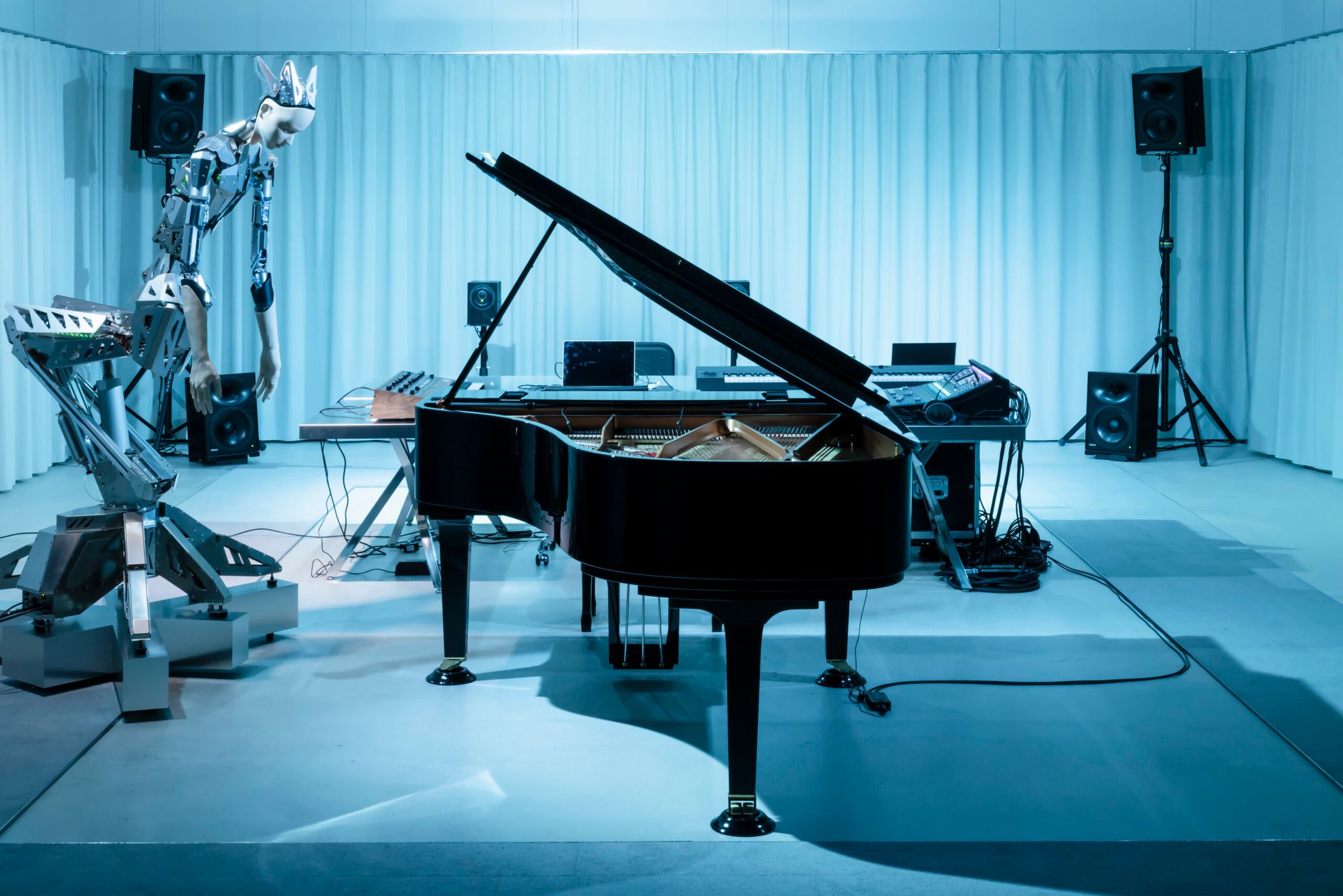
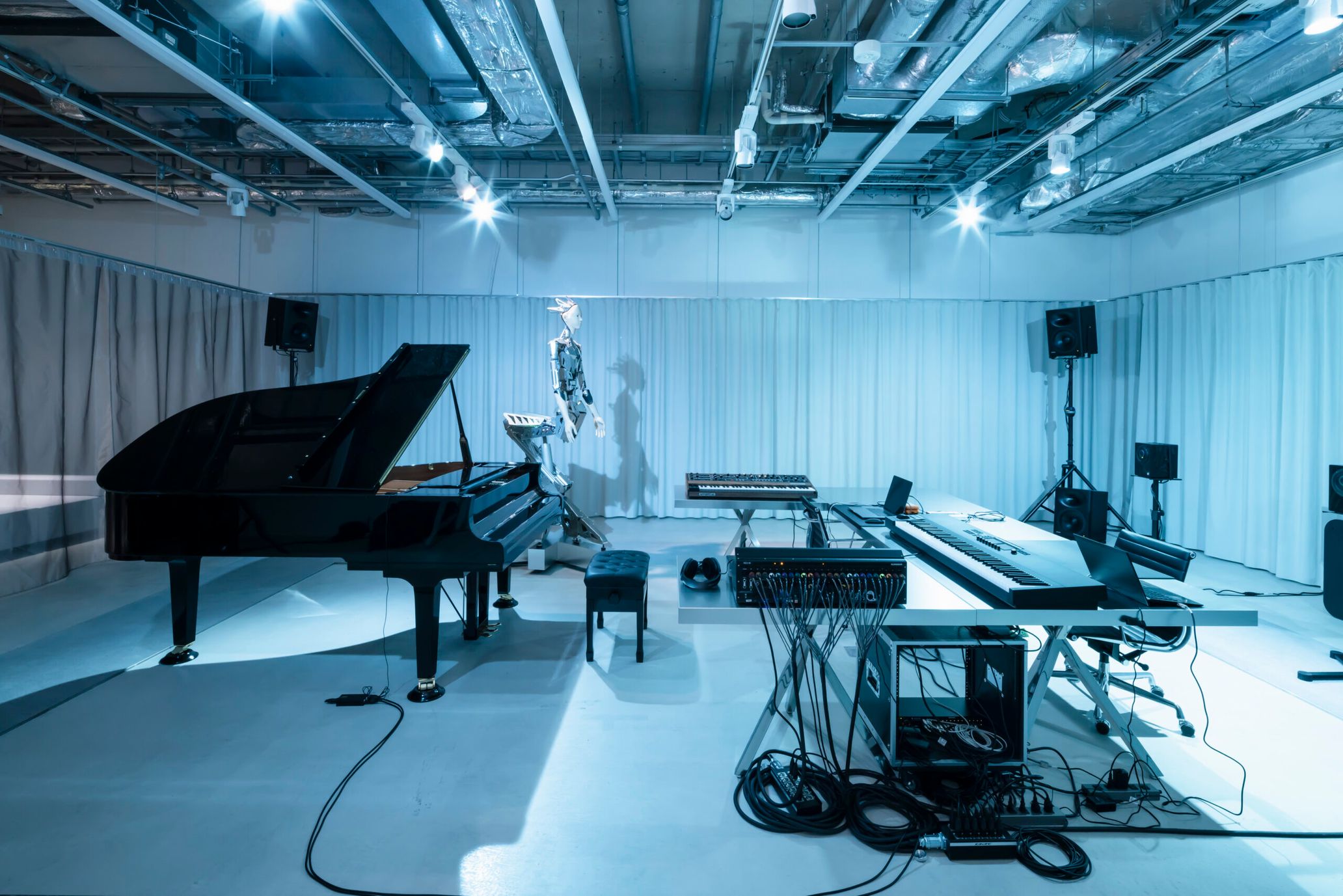
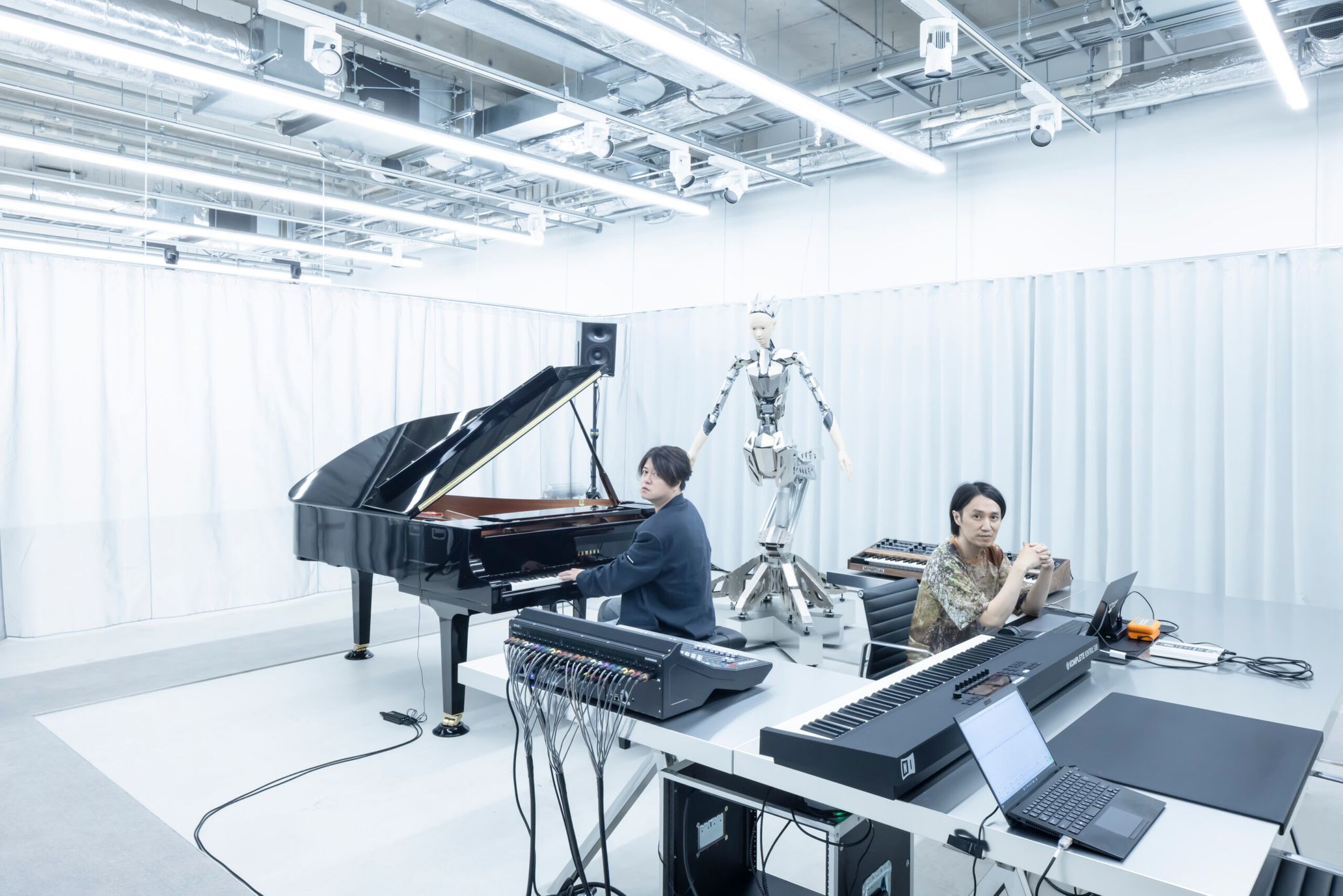
The Art Science Department at the Osaka University of Arts was established in 2017 to cultivate creators of the next generation through interdisciplinary research and education combining art and science. The dean is Norihiro Hagata, who’s been researching and implementing the merge of robots and art. The department building was designed by visiting professor and one of Japan’s leading architects, Kazuyo Sejima. The space has an open feel with beautiful, organic curves and glass windows on all sides, 360 degrees.
The laboratory is on the basement floor of the same building. Once I walked through the entrance hall and stepped inside the laboratory, a minimal space designed by Sejima, from the interior to furniture, and the newest model of the Alter series, Alter4, awaited me. Positioned among a grand piano and synthesizers, Alter4 looked at me while moving with ease.
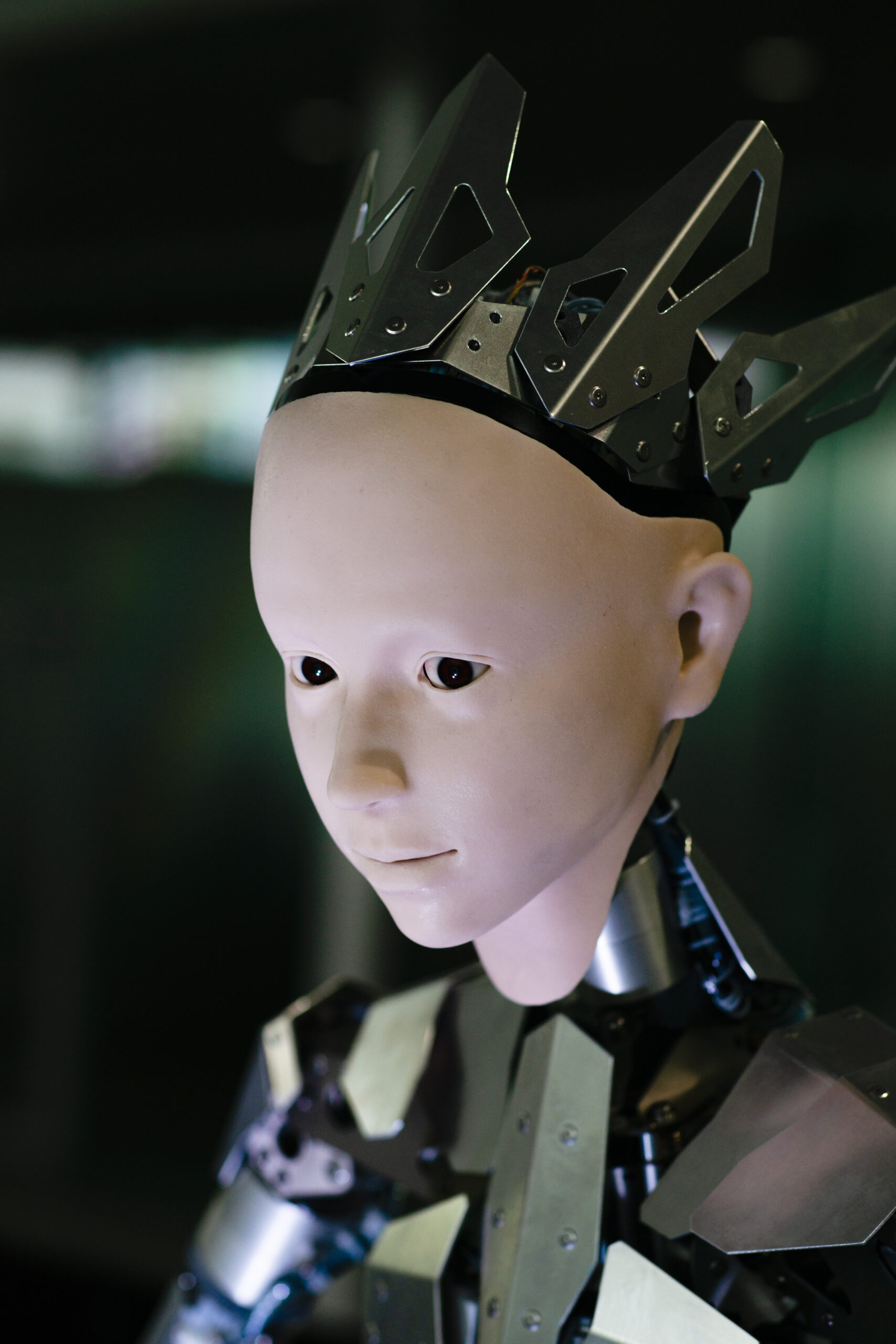
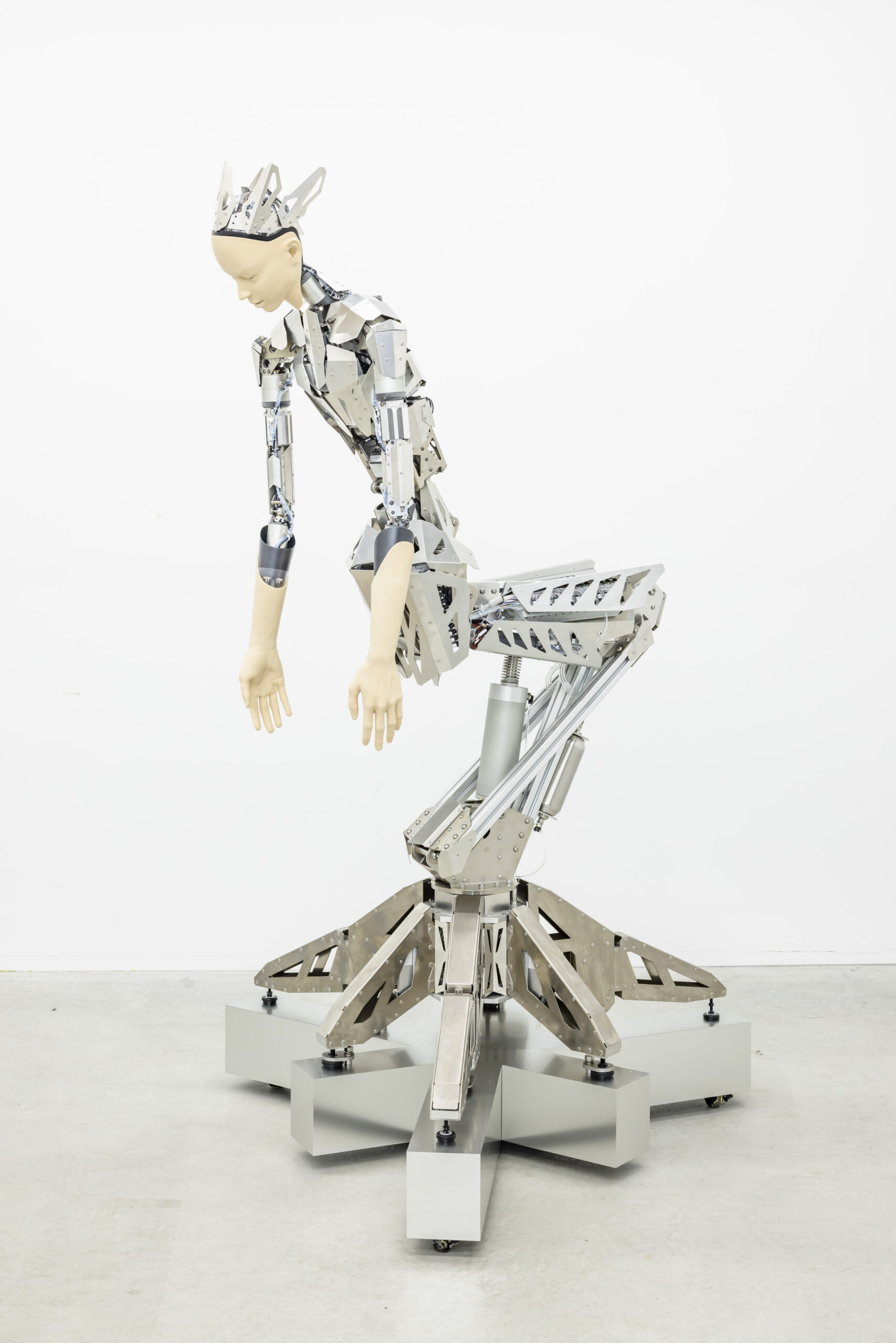
The sight in front of me went beyond my everyday imagination; it was like I was in one scene of a sci-fi film. I decided to take another good, hard look at Alter4, the main character of the room. I’ve seen Shibuya’s Alter series many times from his past works, but Alter4’s expressions and movements were much more varied.
According to the information provided that day, its expressions are more diverse than the previous models because of its enhanced mimetic muscles and tongue movements. The number of joints went from 43 to 53, making it possible for Alter4 to move more dynamically. Alter4, with its increased sense of mobility, had a strong presence that made me look forward to the laboratory’s future endeavors.
Annihilating the conventions and mediocrity of art and technology
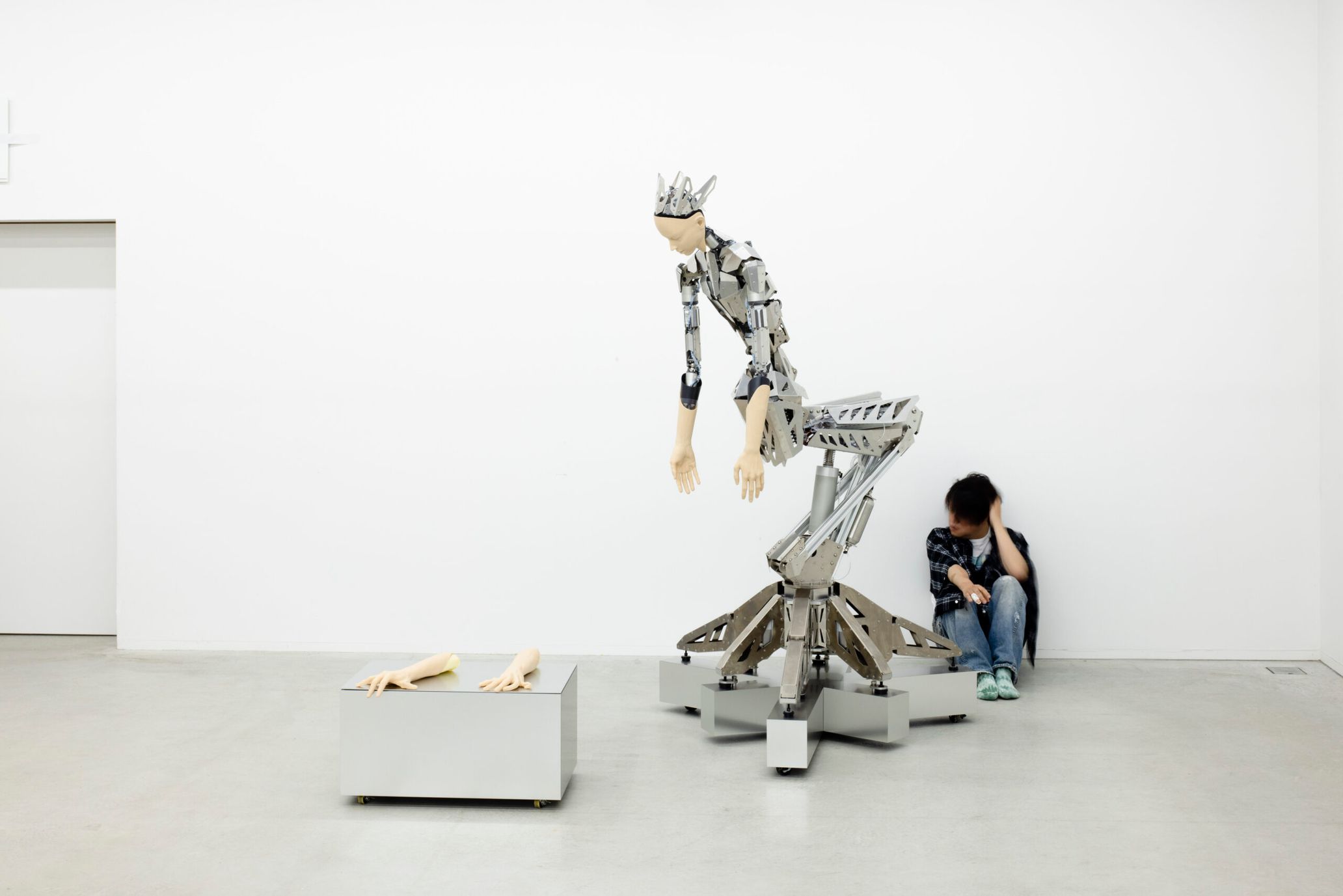

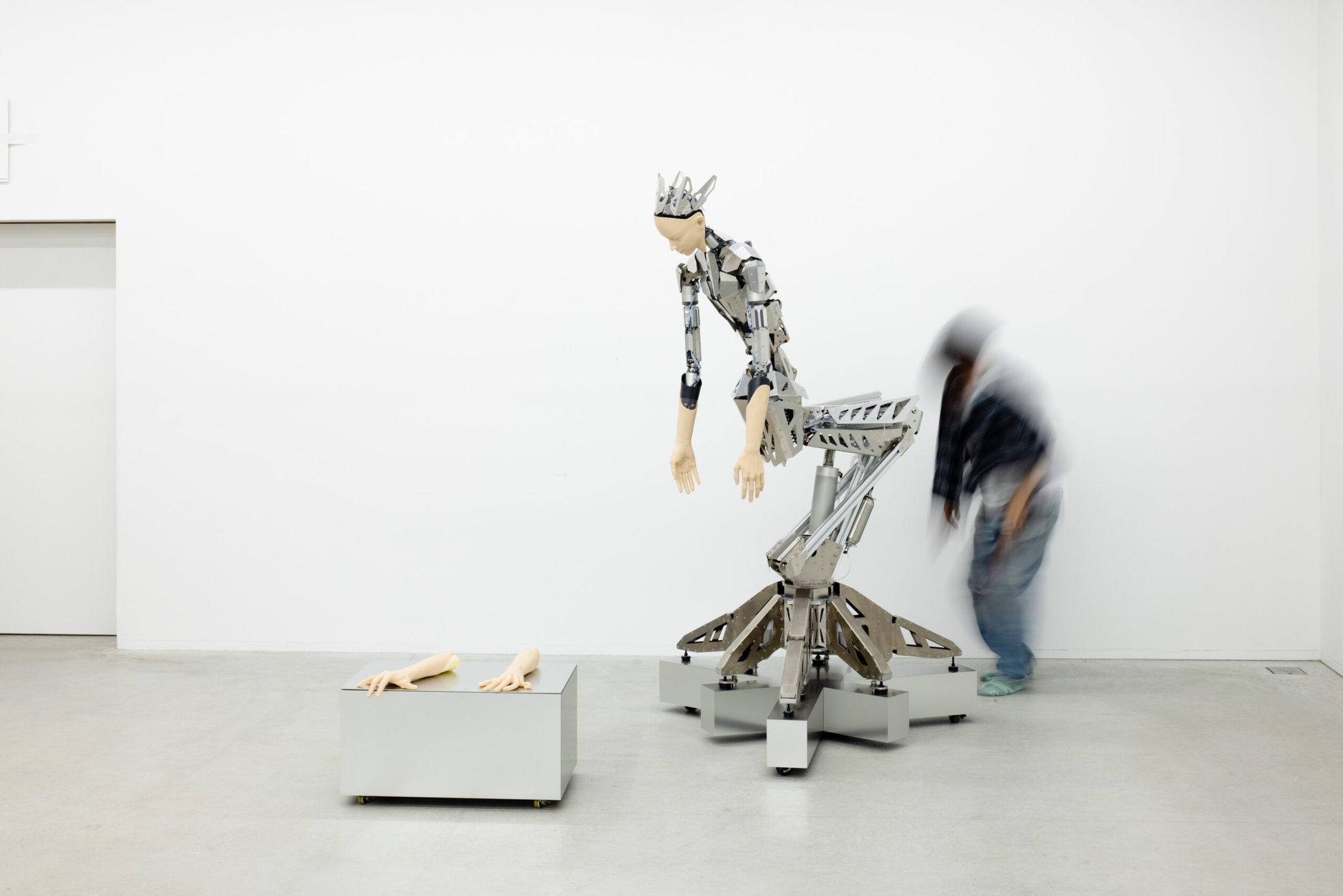
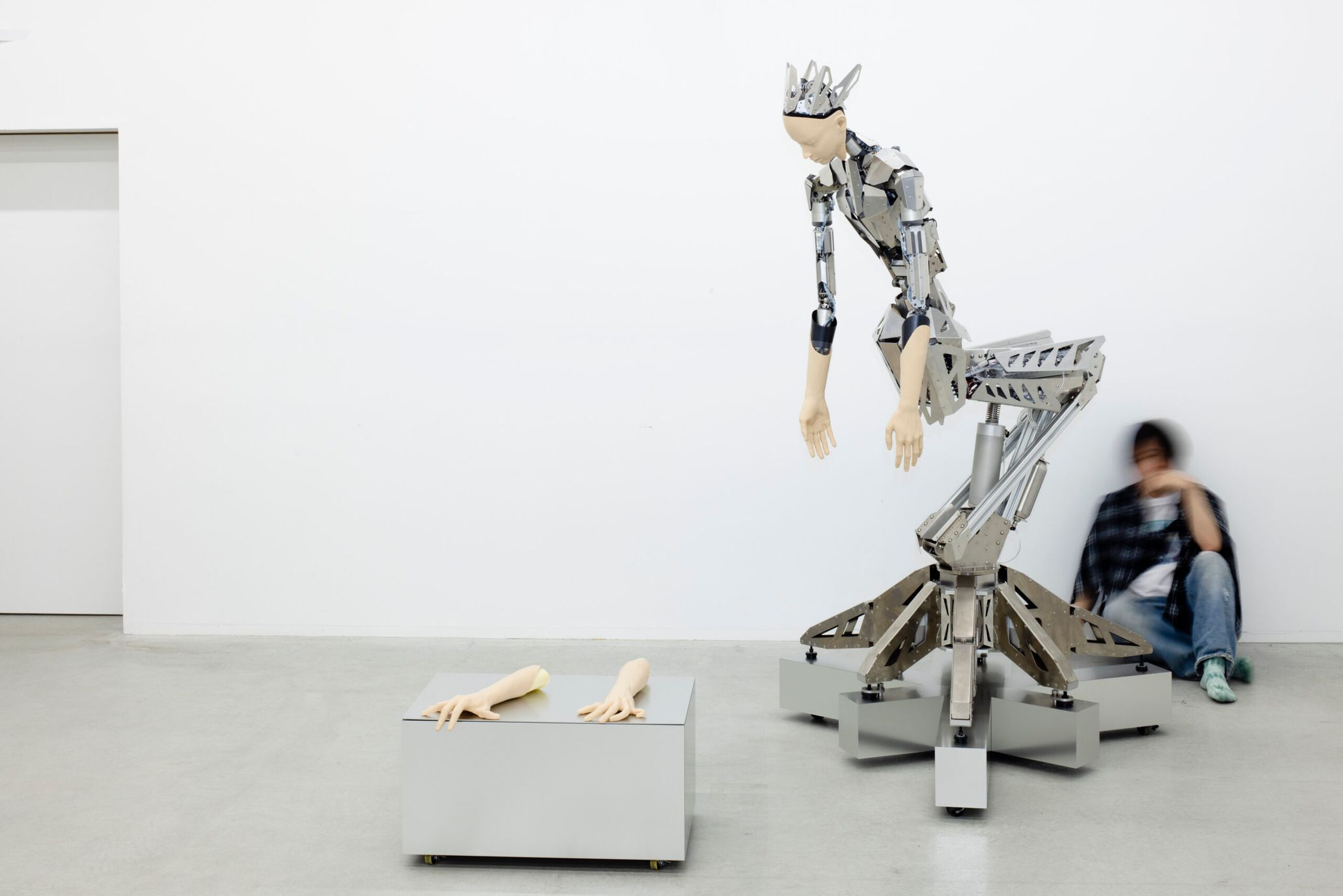
Shibuya, Ishiguro, and Imai will create performances and installations using Alter4 at the laboratory, and the process will be available for the Art Science students to observe or participate in, according to their skill level. It may not be easy to partake in this world-class project, but the students are bound to learn and discover valuable lessons from experiencing the radical creations paving the way for the next generation at the intersection of art and technology.
During the panel discussion before the opening ceremony, Shibuya pointed out that although many projects blend art and science or art and technology, quite a few are boring. The art and technology experts involved in these projects usually stay within the confines of their respective fields of expertise, thus producing a conventional outcome.
Shibuya said one could destroy that monotony by getting rid of one’s technical fixations, going beyond one’s expertise, and “intruding” into each other’s fields. That’s what Shibuya does with his work, and both Ishiguro and Imai possess adaptability and intellectual bravado. There’s no way to tell the specifics of the projects that will arise from the laboratory, but they’ll have nothing to do with conventions and mediocrity.
An impromptu jam session with a human and android

After the involved parties cut the ribbon, the laboratory was officially opened. Shibuya then performed live to celebrate the occasion with Alter4, a grand piano, and a Rev4 synth. Released in 2020, the Rev4 is the renewed version of the famous Prophet-5 analog synthesizer introduced in 1978.
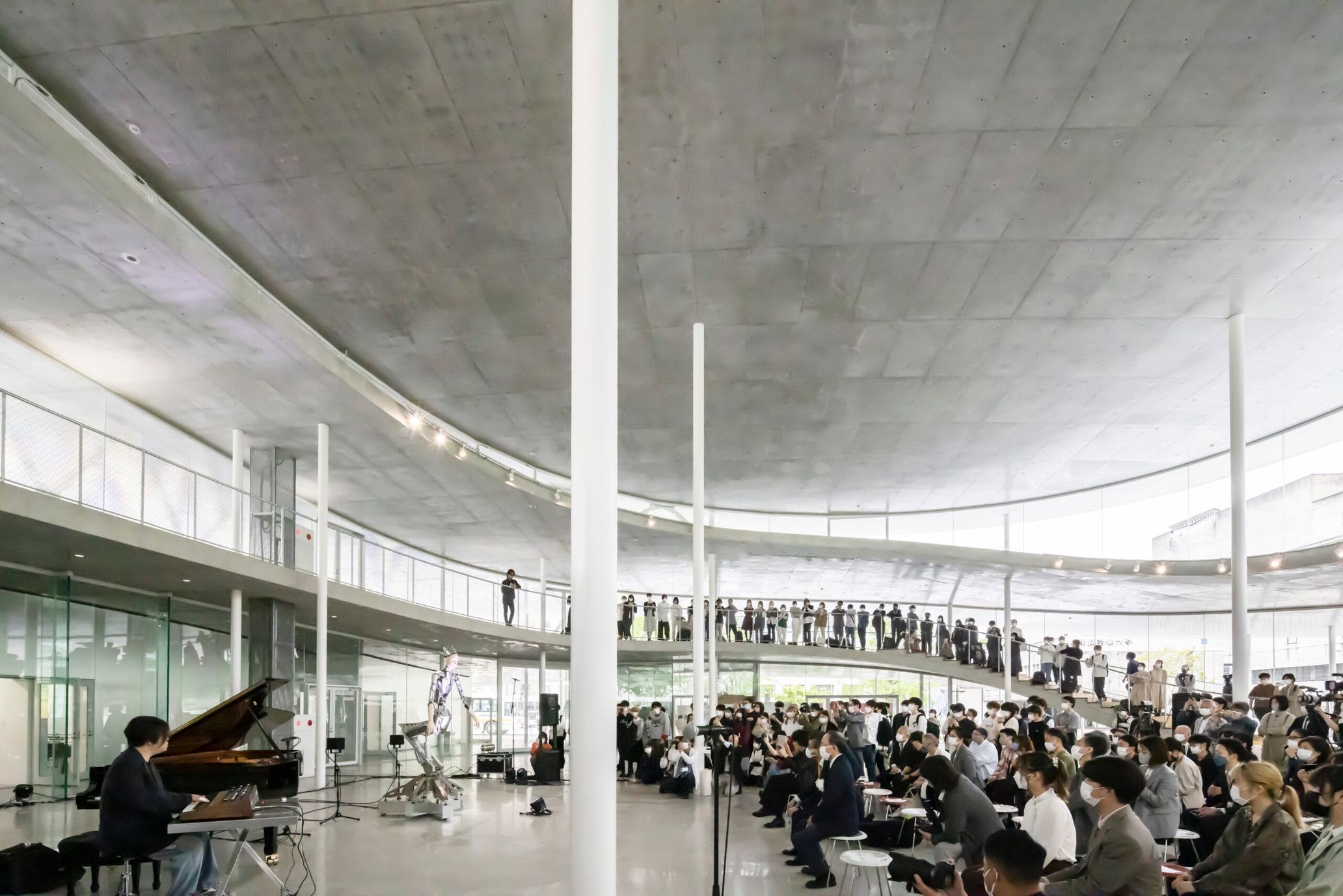
Shibuya started by playing a drone-y, abstract sound in a low tone with the Rev4. Then, Alter4 began swaying to the sound and reciting a poem in English. Checking Alter4’s reaction, he gently changed the ambiance of the sounds with harmonic bells and melancholic leads.
While Shibuya played synth pad harmonies, Alter4 began singing in a distinct voice; somewhere between machine and human. The surprising thing was how Alter4’s singing wasn’t pre-programmed; it was singing impromptu by listening to Shibuya’s performance. Towards the end, Shibuya moved to the piano and played various sounds, from contemporary tone clusters to tender, lyrical phrases and harmonies.
Even then, it continued to sing perfectly with the piano. The spectacle of Shibuya and Alter4 listening to one another and producing sounds was unmistakably a live session, and whoever watched the show could tell that the nervousness and fulfillment were unprogrammable. The celebratory event came to a close after it clearly demonstrated the possibilities of the future of androids and music.

One of the laboratory’s destinations is Expo 2025 in Osaka, three years from now. The expo, with the slogan, “Designing Future Society for Our Lives,” has eight themes. Ishiguro is the producer of the “Amplification of Lives” theme and will be responsible for many different exhibitions and events, and one could expect to see projects made in the laboratory there as well.
How will the horizon of art and technology, which was pioneered at Expo ‘70, be further expanded? I can’t wait to see the creations and imaginations of Shibuya, Ishiguro, and Imai three years later.
■Android and Music Science Laboratory (AMSL)
Visiting professors: Keiichiro Shibuya, Hiroshi Ishiguro, Shintaro Imai, Kazuyo Sejima (lab design)
Furniture and interior design: Kazuyo Sejima & Associates (Kazuyo Sejima, Yoshitaka Tanase, Takayuki Furuya, Naoya Harada, Risa Matsunaga)
Acoustic consultant: Yasushi Shimizu
Construction: Taisei Corporation (Keisuke Yamaura, Shunya Matsuhisa)
Appliances: Kuhsohsha, hhstyle.com (Jun Watanabe)
Curtains: Création Baumann (Masashi Nakajima)
Lighting cooperation: MinebeaMitsumi
Android production: A-Lab
Sound system: Jiro Kubo (Acoustic Field Inc.)
Project management: Natsumi Matsumoto (ATAK)
Producer: Hisamoto Naito
In cooperation with Yamaha Music Japan, Yamaha Corporation, Native Instruments, ATAK
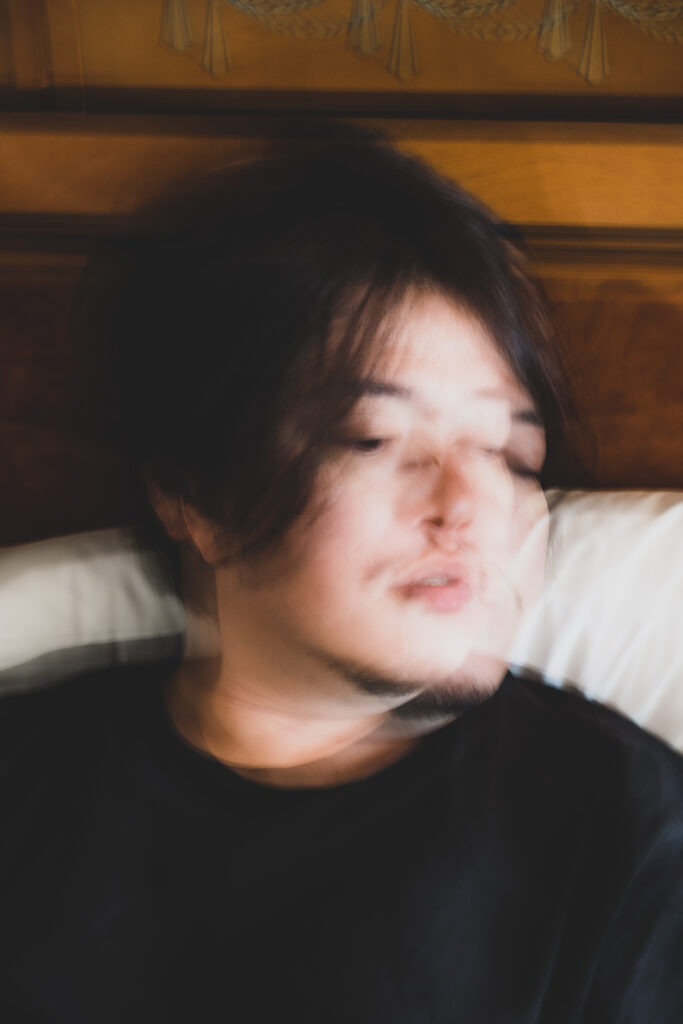
Keiichiro Shibuya
Keiichiro Shibuya is a musician who graduated from Tokyo University of the Arts with a B.A. in Music Composition. In 2002, he founded the music label ATAK. His diverse soundscape covers areas such as cutting-edge electronic music, piano solos, opera, soundtrack music, sound installation, and so forth. His notable works include a Vocaloid opera comprised of no people called The End (2012) and the android opera Scary Beauty (2018). In September 2020, he created the soundtrack for the film Midnight Swan and won the Music Award at both the Mainichi Film Awards and the Japan Movie Critics Award. In August 2021, his opera Super Angels had its world premiere at New National Theater Tokyo. In March 2022, he showed his new android opera, MIRROR, a collaboration between an android, Buddhist music, shomyo, and an orchestra from the UAE at Expo 2020 Dubai. He explores the boundary between humans and technology and life and death.
http://atak.jp
Photography Mari Katayama
